Two Ministries Make Efforts to Support the Rare Earth Industrial Upgrading
- Details
- Category: Rare Earth News
- Published on Monday, 01 April 2013 11:48
- Written by Yuri
- Hits: 2335
It is a good period for the depressing rare earth industry to conduct industrial upgrading officially. Ministry of Finance, Ministry of Industry and Information Technology have jointly issued the "Special Funds Management for Rare Earth Industry Upgrade", which will support "R&D of Technology and Standards", "R&D of Technical Application and Industrialization", "Development of Technical Platform". The measures have incorporated a number of subsidy financing and capital injection to support the rare earth technology development and industrialization.
The special funds will be utilized for the following five perspectives: Rare Earth Resource Extraction Supervision; Rare Earth Mining, Smelting Environmental Technological Innovation; R&D of Rare Earth Key Technologies and Standards; Technology Development and Industrialization of High-end Applications of Rare Earth; Construction of Public Technical Services Platform.
Rare Earth Manufacturer & Supplier: Chinatungsten Online - http://www.chinatungsten.com
Tel.: 86 592 5129696; Fax: 86 592 5129797
Email: sales@chinatungsten.com
Tungsten News & Tungsten Prices, 3G Version: http://3g.chinatungsten.com
Tungsten News & Tungsten Prices, WML Version: http://m.chinatungsten.com
5 Rare Earth Producers in Baotou Pass Environmental Protection Inspections
- Details
- Category: Rare Earth News
- Published on Monday, 01 April 2013 11:39
- Written by Yuri
- Hits: 2379
According to the website of the Environmental Protection Office, 80 rare earth producers in China meet environmental protection requirements, and passed inspections by the Environmental Protection Office. 5 of them are located in Baotou.
These five enterprises include Baotou Xinyuan Rare Earth Hi-Tech and New Material Company, Baotou Luodiya Rare Earth Company, Baotou Tianjiao Seimi Polishing Powder Company, Baotou Rewin Rare Earth Metal Materials Company and Baotou Santoku Battery Company.
After the inspections, environmental protection equipment standard and management ability of enterprises will improve.
Rare Earth Manufacturer & Supplier: Chinatungsten Online - http://www.chinatungsten.com
Tel.: 86 592 5129696; Fax: 86 592 5129797
Email: sales@chinatungsten.com
Tungsten News & Tungsten Prices, 3G Version: http://3g.chinatungsten.com
Tungsten News & Tungsten Prices, WML Version: http://m.chinatungsten.com
China’s REE Export Numbers Rise in February
- Details
- Category: Rare Earth News
- Published on Friday, 29 March 2013 10:51
- Written by Yuri
- Hits: 2323
China’s rare earth export primary materials increased by 289.12 percent in February, to 1,106 metric tons (MT), compared with the same month in 2012; prices continue to drop month-on-month.
An industry analyst told Metal-Pages that China’s exports of rare earths increased sharply in February because the country exported only 284 MT in the same period last year and was assisted when prices continued to fall throughout the month, which in turn encouraged buyers to restock.
The average price for rare earths in February was $22,650 per MT, down 11.32 percent compared with $25,540 per MT in January.
“Exports increased due to low prices. Many consumers will restock before March when sales are stronger. In addition, many consumers restarted production after the Chinese New Year in February,” the analyst added.
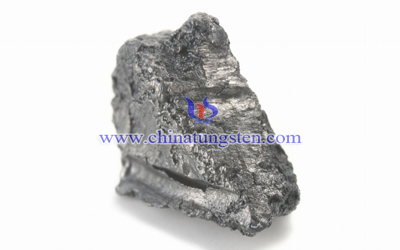
China’s rare earth prices have continued to weaken, with little business reported on the spot market and producers unwilling to sell product at lower prices due to high production costs. Prices for light rare earths and some heavies, such as dysprosium and gadolinium are unchanged, while prices for rare earths of fluorescent powder, such as europium, terbium and yttrium, have edged down slightly.
Reports from Metal-Pages note that market participants remain bearish on the future of rare earths and are expecting prices to decline in the short term, with supply outweighing limited demand from downstream industries.
Traders confirmed that 99-percent praseodymium-neodymium metal is being offered at $61,984 per MT, while the Chinese 99-percent praseodymium oxide market remains quiet due to weak demand. Current prices for dysprosium oxide 99 percent are unchanged at $322 per kilogram, while prices for ferrodysprosium are still at $338 per kilogram, according to Metal-Pages.
China’s terbium oxide market has been described as flat with sporadic trading in the spot market. Industry sources state prices are likely to fall slightly in the near term given lackluster demand from the downstream fluorescent powder industry. Current prices for terbium oxide 99 percent are at $603 per kilogram.
The 99-percent cerium oxide market is sluggish due to weak demand, with most suppliers putting 99-percent cerium oxide prices at $5,956 per MT.
Rare Earth Manufacturer & Supplier: Chinatungsten Online - http://www.chinatungsten.com
Tel.: 86 592 5129696; Fax: 86 592 5129797
Email: sales@chinatungsten.com
Tungsten News & Tungsten Prices, 3G Version: http://3g.chinatungsten.com
Tungsten News & Tungsten Prices, WML Version: http://m.chinatungsten.com
Baotou Steel Rare Earth Announces 2012 Annual Results
- Details
- Category: Rare Earth News
- Published on Monday, 01 April 2013 11:28
- Written by Yuri
- Hits: 2467
China’s largest rare earths producer, Inner Mongolia Baotou Steel Rare-Earth (Group) Hi-Tech Co Ltd.(Baotou Steel Rare-Earth), saw a year-on-year decline of 56.58 percent in net profit last year. Moreover, Baotou Steel Rare-Earth plans to achieve 2013 with annual sales revenue totaled RMB 7.5 billion Yuan, down 18.85% compared to 2012, according to the company’s 2012 annual report released on Friday, March 29, 2013.
The company’s net profits amounted to RMB 1.51 billion Yuan, while operating revenue decreased 19.83 percent year on year to RMB 9.242 billion Yuan in 2012, earnings per share came in at 0.624 Yuan, in 2011, its net profits reached RMB 3.48 billion Yuan as well as per share reached 2.87 Yuan in 2011, according to its annual report filed with the Shanghai Stock Exchange.
“Rare earth market still remains in the doldrums in 2012, the rapidly falling prices of its rare earth-related products and a sharp drop in demand led to the profit and revenue declines. Moreover, the costs of raw materials have increased over the last year, which have increased production costs and push profit margins down”, the company explained.
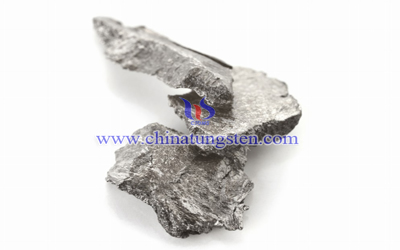
In fact, the company said that it earned a net profit of RMB 1.689 billion Yuan in the first nine months of last fiscal year, which means Baotou Steel Rare-Earth where as it recorded a net profit loss of RMB 1.79 billion Yuan during the fourth quarter due to the company had suspended rare earth production since October 23, 2012.
In addition, the annual report also noted that, under the central government’s plan, only one rare earth upstream enterprise was to be permitted in Baotou. Baotou Steel Rare-Earth has signed an integration agreement with 12 other rare earth producers in the region last year. The company plans to speed up its rare earth monopolization in the Inner Mongolia autonomous region. Moreover, will continue to strengthen communication with Sichuan, Shandong, Gansu (Province), promoting to set up the “China Northern Rare Earth Group”, while led to the creation of the industry’s first ever “mega-company” this year.
At present, almost all China’s enterprises are facing the problem of insufficient demand; the relatively sluggish domestic and overseas consumption market has slowed down the demand for rare earth oxides from the electronics, automobile and other industries. Moreover, the contracted demand from Japan and the US, the world’s second and third largest rare earth consumers respectively also will directly hit the domestic rare earth enterprises. Therefore, expects that the external environment will continue to affect the downstream demand for rare earths as well as the price of rare earth oxides will not make substantial improvement in the short term.”
Rare Earth Manufacturer & Supplier: Chinatungsten Online - http://www.chinatungsten.com
Tel.: 86 592 5129696; Fax: 86 592 5129797
Email: sales@chinatungsten.com
Tungsten News & Tungsten Prices, 3G Version: http://3g.chinatungsten.com
Tungsten News & Tungsten Prices, WML Version: http://m.chinatungsten.com
Peak Resources: A Rare Earth Junior with a Bright Future
- Details
- Category: Rare Earth News
- Published on Friday, 29 March 2013 10:22
- Written by Yuri
- Hits: 2443
Peak Resources, an Australia-based firm focused on fast tracking the development of its 100-percent-owned Ngualla rare earth project in Tanzania, has attracted increased investor attention of late. Peak’s strategy for growth is to rapidly develop Ngualla into production via lower capital costs and to establish itself as a lower-cost quartile, long-term producer of clean, high-purity rare earth products.
The Ngualla project
Located in Southern Tanzania, 147 kilometers from the city of Mbeya on the edge of the East African Rift, the Ngualla project is centered on the Ngualla carbonatite. The name “Ngualla” comes from the Swahili word for “bald head,” which reflects the appearance of the site, most of which is bare land with no inhabitants or agriculture and very little wildlife.
The Ngualla deposit can be divided into two geographic and geological areas: the Southern rare earth zone, located in the center of the carbonatite around Ngualla Hill, and the South West alluvial zone. The Southern rare earth zone is a 1-kilometer by 1-kilometer area in the low magnetic central core of the Ngualla carbonatite, according to the company’s maiden JORC resource report. Rare earth mineralization occurs from the surface and is enriched in the weathered zone of the carbonatite, varying from a few meters to 140 meters vertical depth. The bulk of Ngualla’s mineral resource is contained within the Southern rare earth zone and most of the highest-grade component occurs near surface.
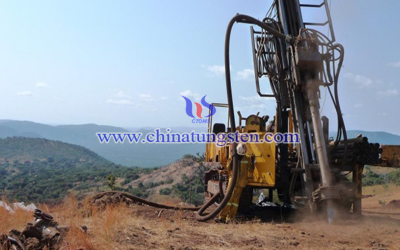
Distinct advantages
The project is a recent discovery and, according to the company, its fundamental geological aspects offer distinct advantages for development over other rare earth projects.
Some of these advantages include being one of the largest and highest-grade deposits in the world, as well as hosting an outcropping blanket of mineralization with the highest grades at surface. This favorable mineralogy makes the deposit amenable to a relatively simple, low-cost processing route, while its uranium (21 ppm) and thorium levels (35ppm) levels are the lowest of any major rare earth deposit in the world, the company’s website notes. Further, initial development will exploit only 10 percent of the total resource over a 25-year period, allowing for significant opportunities for future expansions.
It has not been lost on most investors that Ngualla is a “company maker” — the project has drawn comparisons to Lynas Corporation’s (ASX:LYC) Mount Weld project, a company press release notes.
The project received a significant boost last year when Peak announced the results of a scoping study that reveals Ngualla’s strong economics. At the time, it stated that Ngualla hosts a resource of 170 million metric tons (MT) at 2.24-percent rare earth oxide (REO), making it “the fifth largest rare earth deposit in the world outside of China.” It also has the highest grades of the world’s top seven deposits. The company noted a base case pre-tax net present value figure of $1.571 billion over the 25-year life of the mine, with an average cost of $11.05 per kilogram over that mine life. Average annual revenues will come to $361 million at 10,000 MT equivalent REO production.
Critical rare earth oxides
As the technological applications of rare earths have changed, so too have supply and demand fundamentals. That was highlighted in the US Department of Energy’s 2011 Critical Materials Strategy report, which outlines the critical rare earth oxides (CREOs) that will likely be in short supply moving forward.
The Ngualla project contains a substantial proportion of five CREOS, which together account for 56 percent of the deposit’s in-ground value. Neodymium is the most prominent, at 34 percent of this value, with other notable CREOs being europium, terbium, dysprosium and yttrium, according to Peak’s website.
Also impressive is the fact that the company is currently engaging cornerstone and strategic partners to assist in taking Ngualla through to production in 2016. Considering the project’s 53-percent internal rate of return, it is an attractive investment for strategic investors willing to bet on rare earth oxides in the long run.
In the February issue of Resource Stocks, the company confirmed its plans to engage a strategic partner in the second half of this year, having been working with various strategic investors out of China, South Korea, Japan and Germany, from which interest is “fairly high and competitive.”
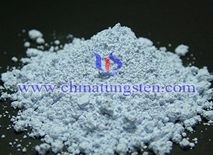
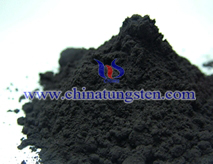
Always looking to improve
While last year’s resource study effectively put Peak on the map, it is the company’s continued success in improving its economics that is proving enticing.
Earlier this month, Peak announced further improvements to the beneficiation process for its Ngualla project in a move that it says has enhanced the project’s overall economics. It noted that the ability to concentrate mineralization at an early stage prior to acid-leach recovery will have a significant positive impact on the project’s costs moving forward.
Outlining some highlights, it confirmed that the optimization of its beneficiation process effectively reduces the mass of feed to be treated by the acid-leach recovery process by 43 percent compared to the initial scoping study’s assumption. The optimized process in turn increases the grade of the feed by over 300 percent, from 5.3-percent REO to 16.9-percent REO for the test’s composite sample.
The latest test work also shows that conventional magnetic separation and flotation techniques reduce the mass of the feed mineralization by 78 percent, and that reducing the amount of material processed at the acid leach recovery stage has a significant impact on overall operating costs. These cost reductions are set to be quantified in a revision of the scoping study and economic assessment that will be completed in the second quarter of 2013. The revised study will also use a new optimized mine schedule based on the new mineral resource estimate and is on schedule for completion by the end of this month.
Richard Beazley, managing director, commented in the press release, “Ngualla continues to improve with each milestone. We are already in the lower quartile in terms of operating costs, and also have one of the lowest capital costs of any rare earth project.”
Last year was a massive year for this junior as it notched up three major milestones; however, 2013 could very well provide the watershed moment investors are hoping for. With the firm keenly set on finalizing products, attracting investors and strategic partners, the prefeasibility study for Ngualla is likely to finally get this hard-working junior the recognition it deserves.
Rare Earth Manufacturer & Supplier: Chinatungsten Online - http://www.chinatungsten.com
Tel.: 86 592 5129696; Fax: 86 592 5129797
Email: sales@chinatungsten.com
Tungsten News & Tungsten Prices, 3G Version: http://3g.chinatungsten.com
Tungsten News & Tungsten Prices, WML Version: http://m.chinatungsten.com





 sales@chinatungsten.com
sales@chinatungsten.com